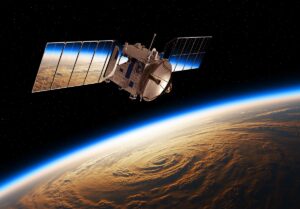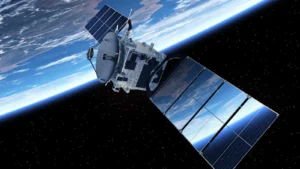Renewable energy technology has come a long way thanks to the global push for sustainable development and reducing carbon pollution. To combat climate change, reduce dependence on fossil fuels, and ensure a secure energy future, we need significant progress in this area. The approach to renewable energy is changing rapidly. This includes bioenergy, solar and wind energy, and energy storage methods. This article discusses the main new developments in renewable energy technologies and how they are changing the way energy is used.
1. Advances in Solar Energy
Solar technology has come a long way in the past decade. Solar panels, photovoltaic (PV) cells, and solar thermal devices are all improving, making solar energy cheaper and more useful. The manufacturing of perovskite solar cells is one of the most important steps forward. These cells can be more efficient than standard silicon-based cells and cheaper to make. Bifacial solar panels collect sunlight from both sides and can also produce more energy without increasing the price.
In addition, new materials and designs for solar panels ensure that they last longer and perform better. For example, transparent solar panels can be placed on the facades and windows of buildings, turning the entire building into an energy plant. Solar skins are also becoming increasingly popular, making solar panels look like they belong on the roof. These make solar systems look better.
2. New Concept of Wind Energy
Another area where new technology increases efficiency and reduces costs is wind energy. One of the most important improvements in this area is the realization of larger, better-performing wind turbines. Modern turbines can harness more wind energy and produce more electricity because they have larger blades and taller towers. There are also more and more offshore wind farms, which benefit from stronger and more regular wind at sea.
Floating wind turbines are a major step forward, allowing wind farms to be built in deeper waters where conventional turbines cannot be anchored. These floating structures can be placed further out to sea, making them less noticeable and benefiting from stronger wind currents. Improvements in turbine materials, such as lightweight plastics, also ensure that they work better and cost less to maintain.
3. Bioenergy and Biomass Technology
Bioenergy, derived from organic matter such as animal and plant waste, is another important component of renewable energy. Bioenergy technology is constantly developing, making biofuels more efficient and environmentally friendly. Second-generation biofuels, made from non-food carbon sources such as crop waste and energy crops, are one of the most exciting new developments. These biofuels are better for the planet and do not hinder food cultivation.
Another new idea transforming the bioenergy industry is anaerobic digestion, which converts organic waste into biogas. This technology not only produces clean energy but also reduces waste and greenhouse gas pollution. Biogas is a flexible and sustainable energy source that can be used to generate electricity, heat homes, or power cars.
4. Methods of Storing Energy
One of the biggest problems with green energy is that energy sources such as wind and solar energy do not always work. Energy storage solutions are important to ensure stable and reliable energy. Advances in battery technology are making it easier and cheaper to store energy. Lithium-ion batteries are used in many electric vehicles and as storage for the electricity grid. They are becoming cheaper, more energy-rich, and last longer.
Solid-state batteries are a big step forward because they have a higher energy level and are safer than regular lithium-ion batteries. These batteries are less likely to leak and ignite because they use a solid solution instead of a liquid solution. In addition, developments in the field of flow batteries (which store energy in liquid chemicals) have made it possible to store large amounts of energy.
Storing hydrogen is another interesting idea. Electrolysis is a sustainable way to make hydrogen, which can then be stored and used in fuel cells or to generate electricity. This method allows you to store large amounts of energy in the long term, making green energy change with the seasons.
5. Increase Renewable Energy in Transportation
Transportation is a major source of greenhouse gas emissions, so using renewable energy in transportation is important to achieve environmental goals. New battery technology and charging stations are making electric vehicles (EVs) more popular and are an important part of this shift. A growing number of ultra-fast charging stations and wireless charging technology are making electric vehicles more user-friendly and usable.
In addition, more and more public transport systems use green energy. Electric buses, trains, and boats powered by renewable energy reduce pollution and improve urban air quality. This is an area where new ideas are leading to lighter materials and more efficient modes of transport, making public transport better and more environmentally friendly.
Conclusion
The way we create, store, and use energy is changing as a result of new developments in green energy technology. These improvements are important to stop climate change, reduce our dependence on fossil fuels, and ensure we have a secure energy future. Bioenergy, smart grids, solar, and wind energy are just some of the new technologies that are rapidly changing the way we obtain energy. These technologies make energy cleaner, more efficient, and more reliable. As these technologies continue to develop, they have the potential to change the way energy is used and make the world more flexible and sustainable.
FAQs
1. What happens with the new approach to wind energy?
Newer wind energy technologies include larger, more efficient turbines, mobile wind turbines for deeper waters, and smart wind farms equipped with sensors and artificial intelligence for optimal results. These new ideas made it easier to build wind farms made them cheaper, and increased the amount of electricity they produced.
2. What new technologies are changing the way biofuels are made?
Second-generation biofuels made from non-food biomass, biofuels made from algae, and the anaerobic digestion of organic waste into biogas are all new ways to create bioenergy. These improvements ensure that everything lasts longer, produces more energy, and gives us more options to get energy.
3. How can energy storage technology make sustainable energy more reliable?
Better lithium-ion and solid-state batteries, flow batteries, and pumped hydroelectric power stations are all examples of energy storage technologies that make green energy more reliable. These technologies make it possible to store energy efficiently and respond quickly to changes in supply and demand, thus ensuring the security of energy supply.
4. What role does smart grid technology play in the integration of renewable energy?
Smart grid technology keeps the network stable and reliable by controlling the variability of green energy. These include improved metering infrastructure, demand response technology, and grid-scale energy storage systems. These systems balance supply and demand, make optimal use of energy, and provide backup power.
5. How to use green energy in transport?
Electric vehicles (EVs) with advanced battery technology and charging infrastructure, hydrogen fuel cell vehicles, and public transport systems powered by green energy are all examples of renewable energy applications in the transport sector. These new ideas reduce pollution and make transportation more environmentally friendly.



